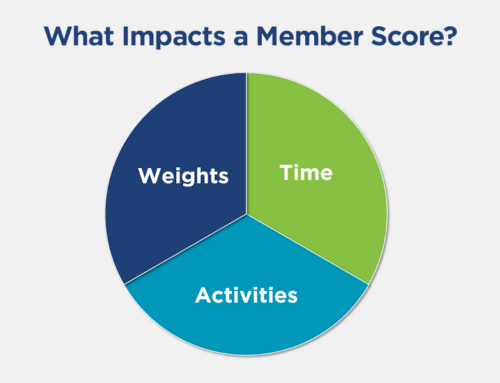At ASAE Tech earlier this month, we shared our Data Analytics Maturity Model (DAMM) which is built for associations by association leaders. Designed as an assessment and high-level action plan, DAMM helps staff members identify where their organization is when it comes to taking a data-guided approach to overall strategy.
Keep in mind though each association is unique and the need for data analytics differs so answers to this assessment vary.
While there are several indicators in each stage of DAMM worth examining, here are 5 areas to hone in on because it impacts where your organization lands in the model.
1. Make your data accessible to everyone.
At this year’s ASAE Annual Meeting, we conducted a live poll of our audience and discovered some interesting statistics that hold true at many associations. 68% of association staff members recognize the potential value of data, but they lack the processes and tools to make it useful to everyone.
Stage 1 of the Data Analytics Maturity Model focuses on “learning.” Associations need to evaluate where their data resides and how easy it is for everyone at the organization to access it. Or is the reporting centralized in the IT department? In the past, it might have made sense for IT to pull the reports and to own the data. However, for your organization to flourish, everyone needs to be able to see the data when it’s convenient for them. A sign of an organization’s maturity is when the data silos have broken down. The ability to use data is essential for competitive advantage and should be a goal for the entire company.
2. Instill an analytics-guided culture.
Chances are you do have business leaders in your organization who possess analytical mindsets and understand the value of data analytics. Those are the champions driving your organization to be more data-guided. Those same staff members can form the core analytics team and begin to develop an effective data strategy that be used throughout the company.
Stage 2 of DAMM is the “planning” phase. At this point, there’s the recognition that there’s a lack of trust in the accuracy of the data. Your team is unsure what data they need or even where to find it. The core analytics team is essential in helping to overcome this challenge.
This same team can also be the ones who experiment with data visualization and create standard operating procedures around data quality management.
All it takes is a small team of interested and motivated staff members to instill a more analytics-guided culture. It won’t happen overnight, of course, but they can be an influential force in encouraging people to embrace analytics in their day-to-day roles.
3. Develop clearly defined KPIs.
Stage 3 is the next stage of maturity for an organization, and it’s all about “building.” By this time, your association has a data strategy in mind and action plan for analytics that has been given the green light from your executive team. Once you’ve gained the executive team’s buy-in, you’ll discover that KPIs need to be established to track your success along the way. How you measure success varies with every department so it’s up to your team to determine what is most suitable to measure your performance. Ideally, these KPIs should go beyond “vanity metrics” and really drill down to what will directly impact the member experience, and these should track back to what your organization’s overall goals are. These take time to refine, but it’s a sign that your organization is maturing.
4. Create a central repository that encompasses all key data sources.
It’s not uncommon to have data living in different systems because there was probably a time when this was a common practice at your association. When your association uses data and analytics to solve business problems, one of the immediate projects to tackle is keeping the data in one repository for everyone. Within this repository, you can find all the key data you need to have a deeper understanding of your members and the services you’re providing them.
Once your organization has a central place for data storage, you’re at Stage 4 which involves “applying” treating the data as an organizational asset and eventually becoming proficient in data analysis because it’s becoming a go-to source for understanding your organization and members.
5. Implement a data governance program.
According to DAMM, the final stage is when your staff members are actively taking a data-guided approach to run their business. Data is routinely used by staff in their respective roles, and everyone has a 360-view of their members. One way to aid data-guided decision making is to establish a data governance program. Data governance keeps data updated and accurate for everyone who uses it. In order for this program to be successful and ongoing, you need to have a team take ownership of it. Whoever this group of staff members are, it’s up to them to communicate, follow, and continually improve the program so it’s relevant to the association as it continues to grow.
The DAMM for associations and nonprofits is an eye-opening way for your organization’s team to identify where it is in the model and what action steps you can take to move your association forward.
Learn More About DAMM for Associations
To learn more about the upcoming release of DAMM for Associations and what a data analytics model can do for your organization contact us and sign up for our monthly newsletter.




